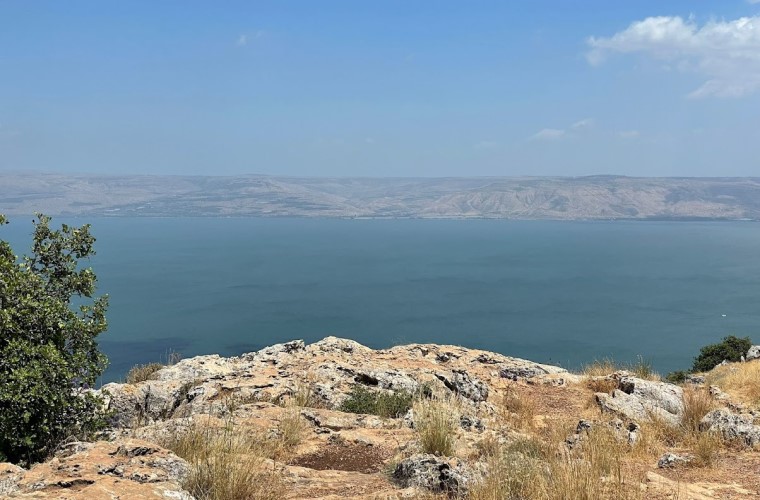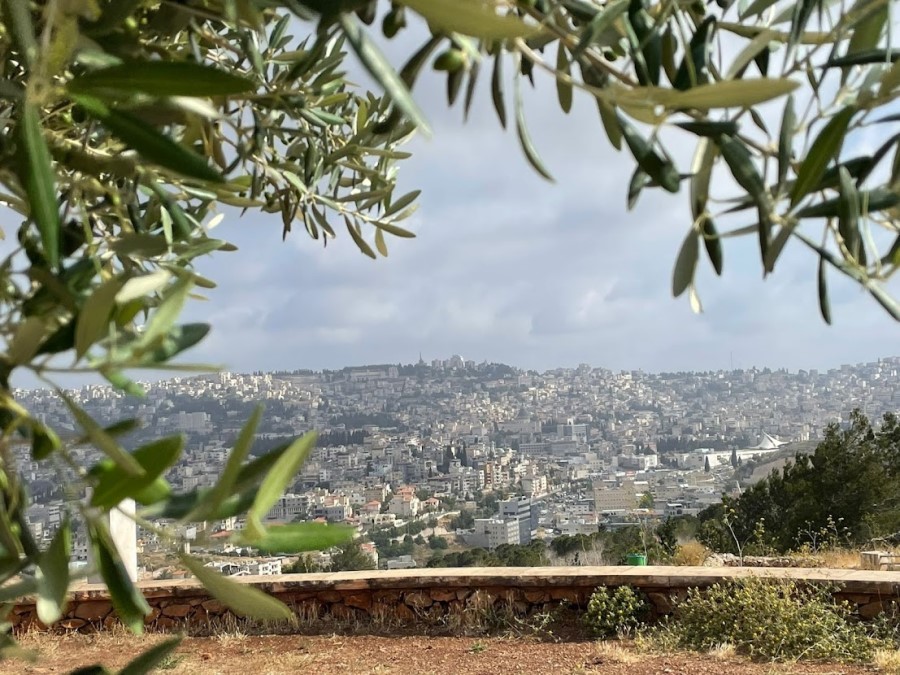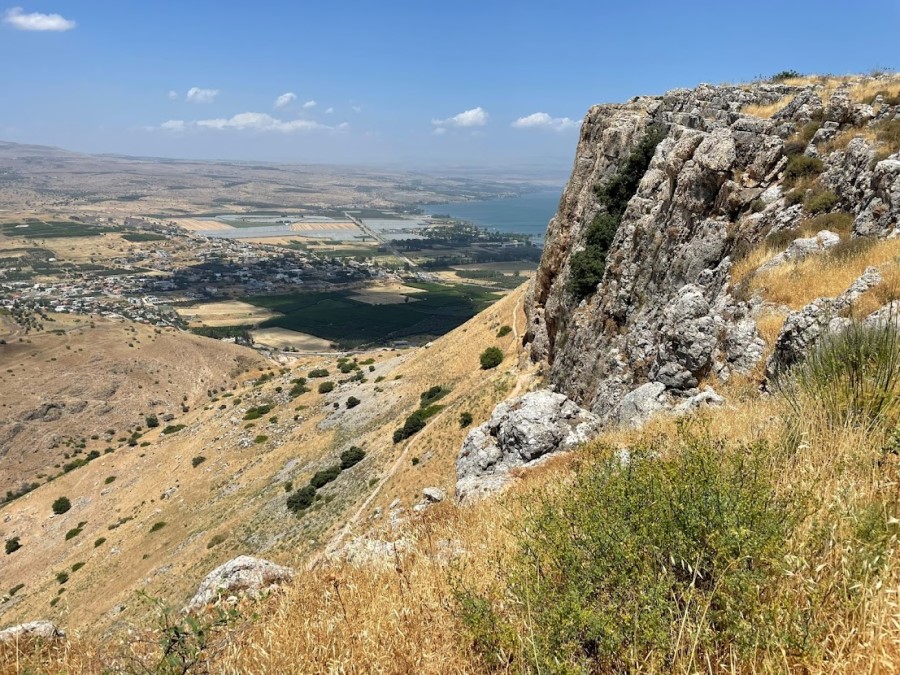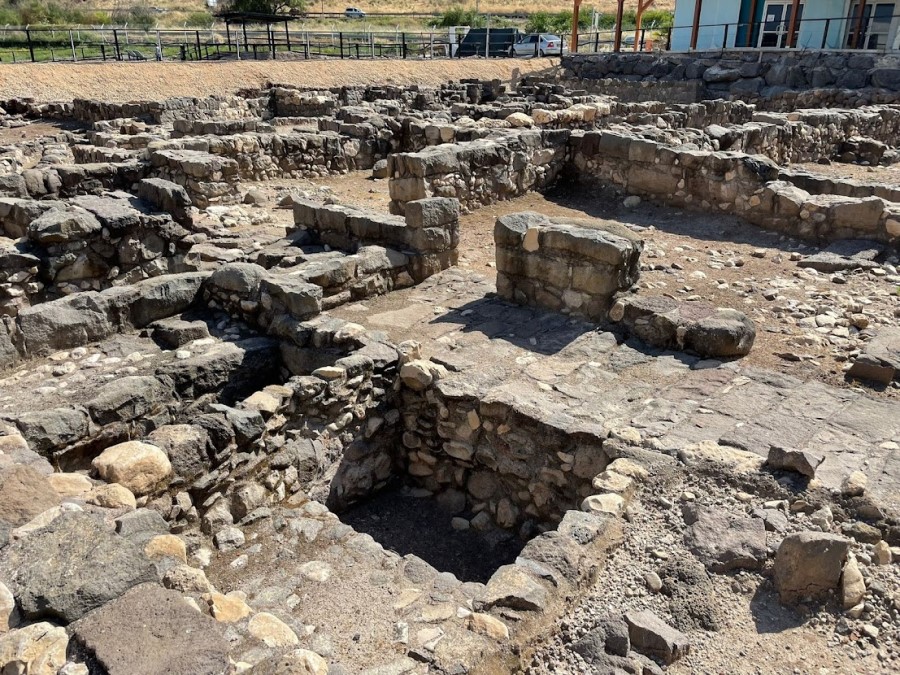Shalom!
Today was another beautiful day: some clouds, breezy, upper 70s. We explored Lower Galilee (not much happened in Upper Galilee in Bible times) as we made our way from Nazareth to Ein Ged on the eastern side of the Sea of Galilee. Here are a few highlights:
We started the day by visiting an overlook spot on the Nazareth Ridge, what’s called the “Mount of the Precipice.” The site is so named because it’s the traditional location of the events of Luke 4:28-30, when the people of Jesus’ hometown attempted to throw him off a cliff. While a precipitous height to be sure, the site is probably too distant from ancient Nazareth to be correct. However, from the high vantage point, Dr. G was able to show us where NT Nazareth was (within modern Nazareth, basically around the Church of the Annunciation). Nazareth was a town built between two springs in a cup-shaped area on the Nazareth Ridge but too far away from main trade routes to develop much. Nazareth probably only had a population between 200-400 people in Bible times, yet this is where Jesus was conceived in Mary by the Holy Spirit (Lk 1:26-38). This is also where Jesus grew up, worked, and was rejected by those who thought they knew him best (Mt 2:19-23; Lk 2:39-40; Mk 6:1-6).
Around midday, our group hiked down a section of Mount Arbel. Mount Arbel is a high-cliffed mountain that stands prominently next to the Sea of Galilee; while the mountain is only about 600 ft. above sea level, the mountain is about 1250 ft. above the Sea of Galilee. Mount Arbel could have been the mountain in Galilee at which Jesus met with his disciples after his resurrection and gave them the Great Commission; the panoramic view of the mountain would have appropriately paralleled a view of the gospel going out to all the world (Mt 28:16-20). A hiking trail leads down to a section of rock climbing (using only hand grips and cords!) before resuming into a downward-sloping walk.
Our hike down Mount Arbel brought us to ancient Magdala, the town at the mountain’s base and the hometown of one of Jesus’ most devoted disciples, Mary Magdalene (or “Mary of Magdala”) (Lk 8:2). The ruins of Magdala (in the area of modern Migdal) were discovered when a pilgrimage hotel was digging to expand its facilities; we actually had to walk through that hotel to access the site! The site dates to the 1st century AD and includes a number of notable finds. Archaeologists have uncovered two synagogues in Magdala, indicating that it was probably an important Jewish city (maybe as many as 4,000 people living there). Archaeologists have also uncovered the market section of the town; one building there features a series of stone basins, probably serving as holding areas for fresh or salted fish. After all, Magdala was well-known for its fish: the later Babylonian Talmud refers to the town as “Magdala Nunayya” or “tower of the fishes,” and Josephus refers to the site by the Greek name “Tarichaea” meaning “place of salted fish.” Jesus may have had the salted fish of Magdala in mind when he preached nearby about being the salt of the earth (Mt 5:13).




